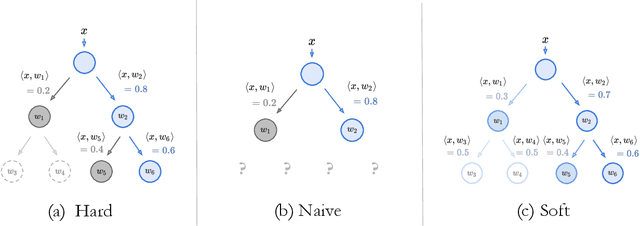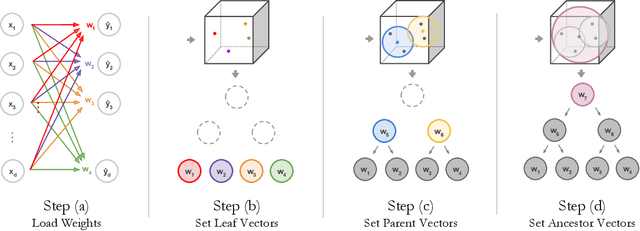Jihan Yin
Detecting and Preventing Hallucinations in Large Vision Language Models
Aug 18, 2023



Abstract:Instruction tuned Large Vision Language Models (LVLMs) have significantly advanced in generalizing across a diverse set of multi-modal tasks, especially for Visual Question Answering (VQA). However, generating detailed responses that are visually grounded is still a challenging task for these models. We find that even the current state-of-the-art LVLMs (InstructBLIP) still contain a staggering 30 percent of the hallucinatory text in the form of non-existent objects, unfaithful descriptions, and inaccurate relationships. To address this, we introduce M-HalDetect, a (M)ultimodal (Hal)lucination (Detect)ion Dataset that can be used to train and benchmark models for hallucination detection and prevention. M-HalDetect consists of 16k fine-grained annotations on VQA examples, making it the first comprehensive multi-modal hallucination detection dataset for detailed image descriptions. Unlike previous work that only consider object hallucination, we additionally annotate both entity descriptions and relationships that are unfaithful. To demonstrate the potential of this dataset for hallucination prevention, we optimize InstructBLIP through our novel Fine-grained Direct Preference Optimization (FDPO). We also train fine-grained multi-modal reward models from InstructBLIP and evaluate their effectiveness with best-of-n rejection sampling. We perform human evaluation on both FDPO and rejection sampling, and find that they reduce hallucination rates in InstructBLIP by 41% and 55% respectively. We also find that our reward model generalizes to other multi-modal models, reducing hallucinations in LLaVA and mPLUG-OWL by 15% and 57% respectively, and has strong correlation with human evaluated accuracy scores.
Empirical Analysis of the Strengths and Weaknesses of PEFT Techniques for LLMs
Apr 28, 2023Abstract:As foundation models continue to exponentially scale in size, efficient methods of adaptation become increasingly critical. Parameter-efficient fine-tuning (PEFT), a recent class of techniques that require only modifying a small percentage of the model parameters, is currently the most popular method for adapting large language models (LLMs). Several PEFT techniques have recently been proposed with varying tradeoffs. We provide a comprehensive and uniform benchmark of various PEFT techniques across a representative LLM, the FLAN-T5 model, and evaluate model performance across different data scales of classification and generation datasets. Based on this, we provide a framework for choosing the optimal fine-tuning techniques given the task type and data availability. Contrary to popular belief, we also empirically prove that PEFT techniques converge slower than full tuning in low data scenarios, and posit the amount of data required for PEFT methods to both perform well and converge efficiently. Lastly, we further optimize these PEFT techniques by selectively choosing which parts of the model to train, and find that these techniques can be applied with significantly fewer parameters while maintaining and even improving performance.
NBDT: Neural-Backed Decision Trees
Apr 01, 2020



Abstract:Deep learning is being adopted in settings where accurate and justifiable predictions are required, ranging from finance to medical imaging. While there has been recent work providing post-hoc explanations for model predictions, there has been relatively little work exploring more directly interpretable models that can match state-of-the-art accuracy. Historically, decision trees have been the gold standard in balancing interpretability and accuracy. However, recent attempts to combine decision trees with deep learning have resulted in models that (1) achieve accuracies far lower than that of modern neural networks (e.g. ResNet) even on small datasets (e.g. MNIST), and (2) require significantly different architectures, forcing practitioners pick between accuracy and interpretability. We forgo this dilemma by creating Neural-Backed Decision Trees (NBDTs) that (1) achieve neural network accuracy and (2) require no architectural changes to a neural network. NBDTs achieve accuracy within 1% of the base neural network on CIFAR10, CIFAR100, TinyImageNet, using recently state-of-the-art WideResNet; and within 2% of EfficientNet on ImageNet. This yields state-of-the-art explainable models on ImageNet, with NBDTs improving the baseline by ~14% to 75.30% top-1 accuracy. Furthermore, we show interpretability of our model's decisions both qualitatively and quantitatively via a semi-automatic process. Code and pretrained NBDTs can be found at https://github.com/alvinwan/neural-backed-decision-trees.
 Add to Chrome
Add to Chrome Add to Firefox
Add to Firefox Add to Edge
Add to Edge